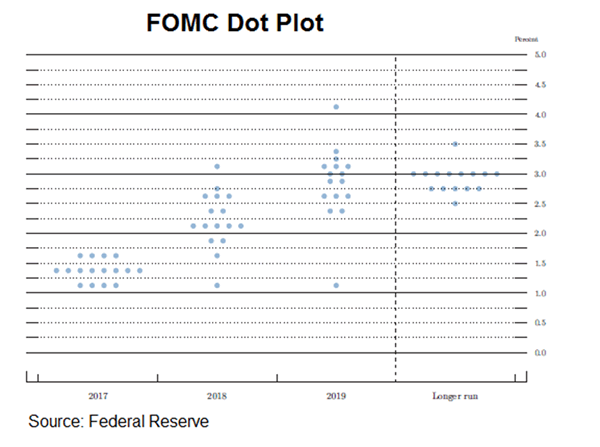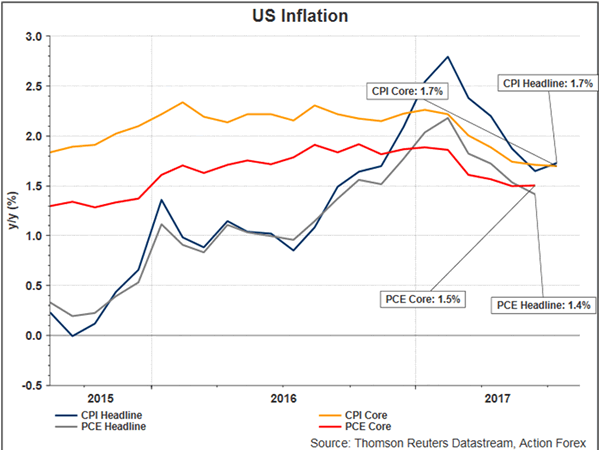The price actions in US dollar and Treasuries suggested that the market views the July FOMC minutes as a dovish one. The minutes revealed that policymakers were concerned that US inflation might stay below +2% longer than previously anticipated. On the other hand, it appears that an announcement on balance sheet policy is imminent. The market pricing of a rate hike in December ranges from 35-45%. It only expects less than two times of rate hike through end-2018, compared with four projected in the Fed’s dot plot. US dollar initially climbed higher upon release of the statement. Gains were, however, erased shortly with the DXY index ending the day -0.33% lower. Treasury prices strengthened, sending 2-year yields -3 points lower to 1.33% and 10-year yields -5 points to 2.23%.

On inflation, the minutes unveiled that ‘many participants’ still believed that ‘much of the recent decline in inflation had probably reflected idiosyncratic factors…and the monthly readings might be depressed by possible residual seasonality in measured PCE inflation’. Moreover, ‘most participants indicated that they expected inflation to pick up over the next couple of years from its current low level and to stabilize around the Committee’s 2% objective over the medium-term’. However, the minutes also indicated that ‘many participants’ pointed out the possibility that ‘inflation might remain below 2% for longer than they currently expected’ while ‘several indicated that the risks to the inflation outlook could be tilted to the downside’
The implications of soft inflation on the monetary policy were relatively balanced. ‘Some participants’ believed that the Fed should ‘be patient under current circumstances in deciding when to increase the federal funds rate further and argued against additional adjustments until incoming information confirmed that the recent low readings on inflation were not likely to persist and that inflation was more clearly on a path toward the Committee’s symmetric +2% objective over the medium term’. These comments were then balanced by ‘some other participants’ who ‘were more worried about risks arising from a labor market that had already reached full employment and was projected to tighten further or from the easing in financial conditions that had developed since the Committee’s policy normalization process was initiated in December 2015’. These members warned that ‘a delay in gradually removing policy accommodation could result in an overshooting of the Committee’s inflation objective that would likely be costly to reverse, or that a delay could lead to an intensification of financial stability risks or to other imbalances that might prove difficult to unwind’.
A formal announcement of balance sheet reduction appears imminent. The minutes noted that ‘participants generally agreed that, in light of their current assessment of economic conditions and the outlook, it was appropriate to signal that implementation of the program likely would begin relatively soon, absent significant adverse developments in the economy or in financial markets’. For details of how the Fed plans to gradually shrink its US$4.5 trillion balance sheet, please see: https://www.federalreserve.gov/monetarypolicy/files/FOMC_PolicyNormalization.20170613.pdf.
The minutes were not as dovish as we had anticipated. Despite the disappointment in June inflation, most members continued to maintain the view that the current weak price levels were transitory, although some were worried that inflation might take longer than previously expected to reach the +2% target. Indeed, headline inflation improved modestly, while core inflation steadied, in July. These should be a relief for the members. Barring any dramatic deterioration the economic outlook, we continue to expect one more rate hike in December and a formal announcement of balance sheet reduction to come in September.















